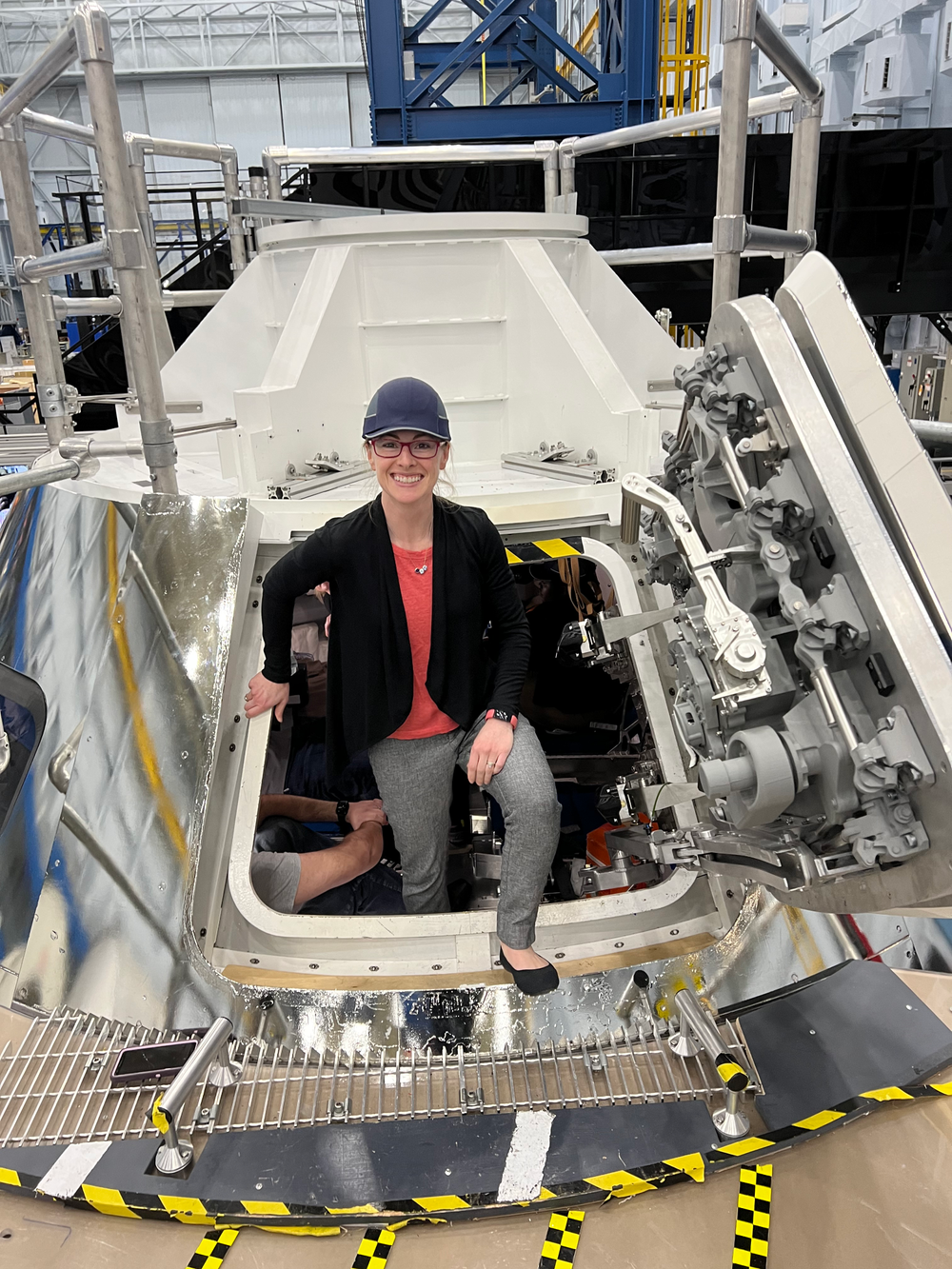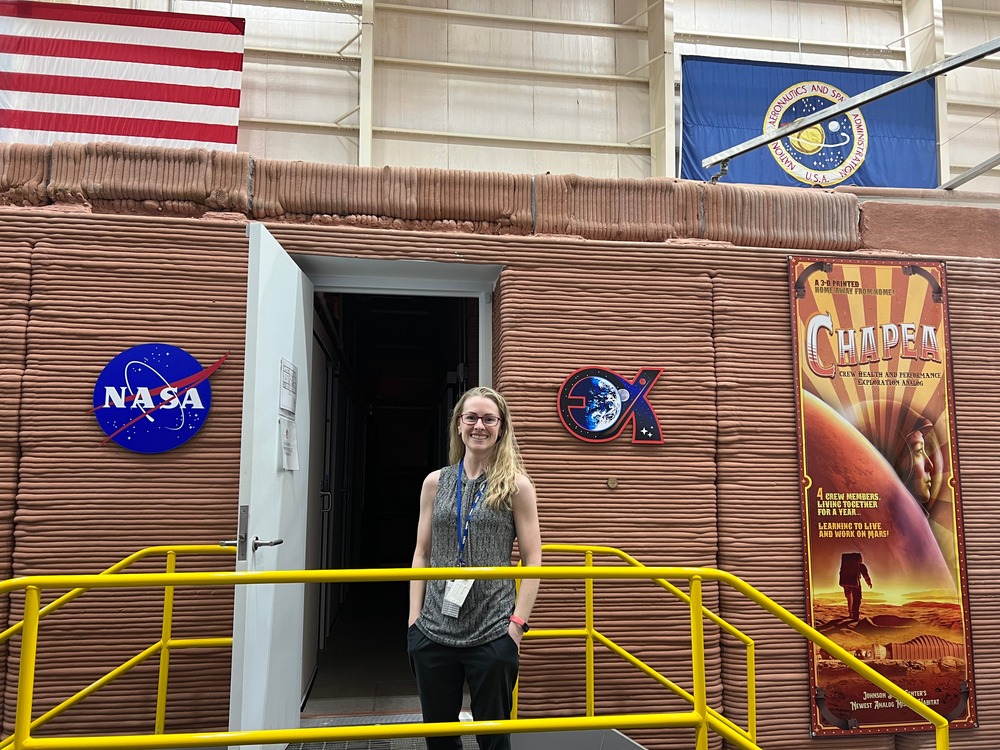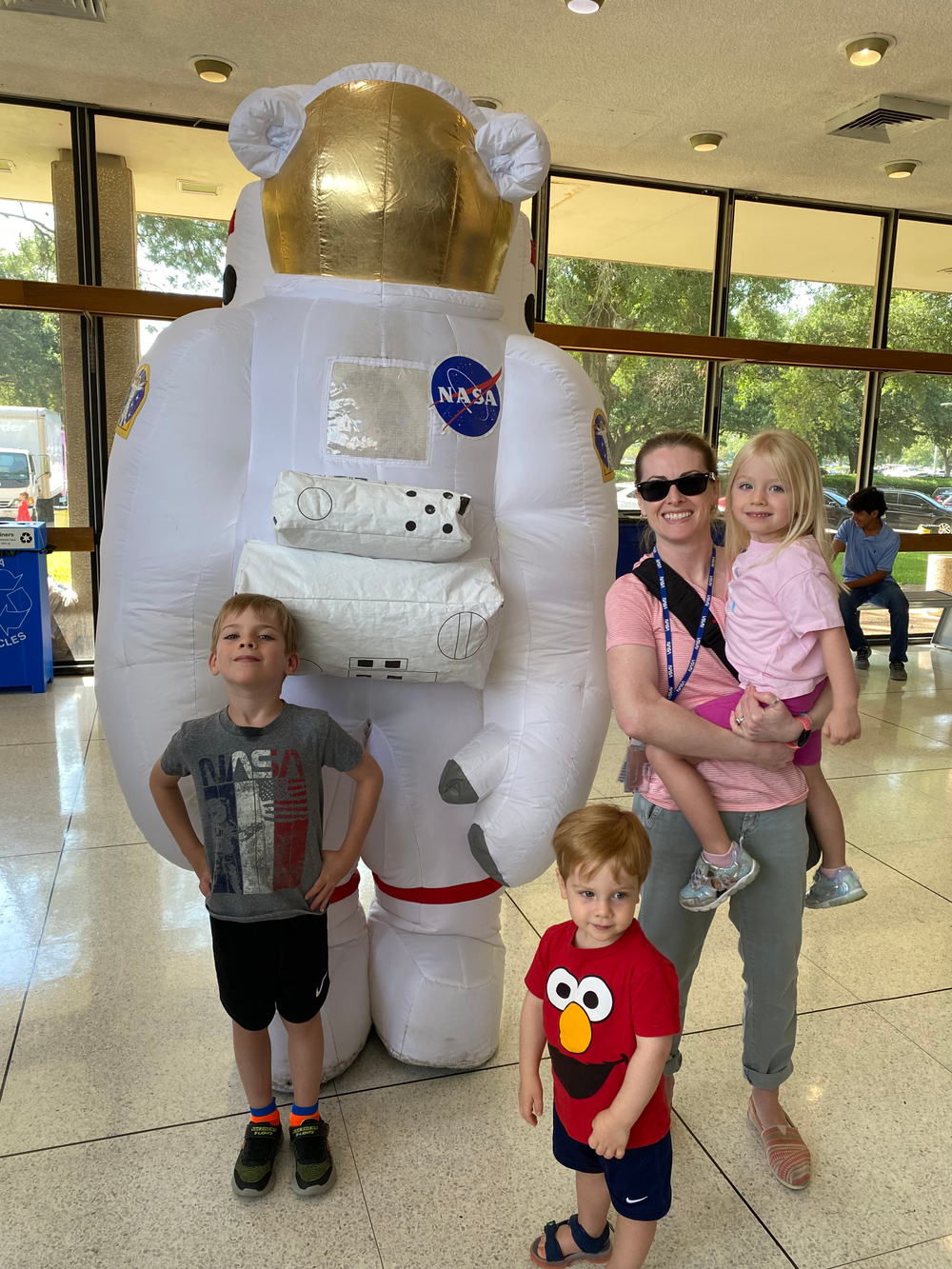The People of Johnson: Meet Lauren Blackwell Landon, Team Risk Discipline Scientist
The next time International Space Station crew members complete a successful spacewalk, they can thank scientists like Dr. Lauren Blackwell Landon for helping everything go smoothly.
Landon looks for ways to ensure that teams of astronauts and flight controllers can work together effectively and efficiently. She’s a scientist within NASA’s Human Research Program (HRP) who’s studying psychology in the workplace: how human behavior at work can be understood and improved to accomplish the goals of the organization and support the well-being of the employees.
newArticle.png?generation=1701265342747764)
Landon’s work largely focuses on research exploring team dynamics, training, and performance. Part of her role involves overseeing teams-related research that is funded by NASA but often conducted by academics outside of the agency. She helps the agency identify gaps in knowledge about how teams work and what they need to succeed, and she advocates for new research projects to fill those gaps. Once a project is approved for funding, Landon serves as a liaison between the agency and the researchers, helping to ensure all parties have the information and resources they need to complete a study.
Landon also works in the Behavioral Health and Performance (BHP) Lab, which conducts research to better understand astronauts’ psychological and behavioral responses to spaceflight. Her research looks at which combinations of astronauts will likely work well together, where and how a team’s ability to live and work together may be challenged, and the training and other resources teams need to be successful in their missions.
Such research is vital to NASA’s plans to send humans deeper into space. For instance, researchers are re-examining the logistics of spacewalks given that astronauts will soon be landing on the Moon’s surface during Artemis missions, Landon noted. “It’s our role to ask: During spacewalks, how are crew members communicating? Are they feeling stressed and is that impacting their performance?” she said. “Those questions tie back to teams research and psychology.”
Landon periodically assists with astronaut and flight director selection. She also leads teamwork training for both astronaut candidates and flight controllers.
Each of Landon’s responsibilities reflects the broader work of HRP and the group within HRP that she belongs to, called the Human Factors and Behavioral Performance Element (HFBP). This group seeks to understand how astronauts use and respond to technology, equipment, and processes designed for space missions. HRBP scientists also study spaceflight stressors and their impact on astronauts’ behavior and performance.

Landon was not aware that positions like hers were available at NASA until she applied for the job. A love of psychology inspired plans to become a therapist after college, but Landon realized that she really enjoyed working in research labs instead. Completing her Ph.D. program gave Landon opportunities to work with several professors whose research was funded by government grants, including some from the U.S. Navy. She also completed an internship with the Federal Aviation Administration’s Human Factors Research Division. This government experience shaped the next steps of Landon’s career.
“My first job out of college, I knew I wanted to stay in government,” she said. “I liked serving my country, but I didn’t want to join the military. So, I found a way to serve my country through science.”
Landon spent four years working at the U.S. Department of Energy’s Oak Ridge National Laboratory, where she helped to train high-performance teams of accomplished scientists. Her work in this area caught the attention of a contact at NASA who encouraged her to apply for her current position. “Similar to what I’ve done before, this role involved working with high-performance teams…just off the planet Earth,” she said. “That added layer of complexity was really interesting to me.”
For most of the nearly 10 years that Landon has been a contractor with NASA, HFBP’s research has focused on what teams may experience on future crewed missions, and especially missions to Mars. “Those missions will likely have a four-person crew living in a confined space for at least two and a half years, while dealing with a 22-minute delay in communications with Earth. That creates kind of a pressure-cooker situation,” she said. For this reason, HFBP research seeks to understand what resources, support, and training are needed to help crews be successful long-term, as well as how to select the best team-oriented crew members who can tolerate stress and personal differences and handle conflict management.

These are some of the questions that CHAPEA—the Crew Health and Performance Exploration Analog—will help answer, Landon noted. CHAPEA is currently hosting a year-long simulation of Mars life, where four crew members are confined and isolated within a 3D printed, 1,700-square-foot habitat. Working on the Mars analog and other analogs, Landon said, have been some of her most memorable experiences at NASA to date. “Getting in a room with people from different disciplines and brainstorming what tasks we can give the crew to test how they come together as a team has been really fun,” she said. She is currently leading a study through CHAPEA about whether crew habitats can be designed in a way that is more supportive of long-term behavioral health.
With all the focus on Mars, it is no surprise that Landon is eager for crews to land on the Red Planet. “We’re putting a lot of resources towards that, and a lot of really smart people are thinking through the challenges it entails,” she said. “We can do it!”

Reflecting on her time at NASA, Landon said she has learned the importance of building an internal network. “If I need help or we get stuck on a research project, there are so many times I just happen to know the right person to go to for help because I’ve spent time building that network,” she said. “It’s not just the team of people that you’re officially matrixed to. It’s also these informal connections you build that can really pay off down the road.”
She also thinks her innate curiosity and drive to learn more have helped her achieve professional success. Since her start date at Johnson happened to be in the summer, she seized the opportunity to attend many of the informational lectures that were planned for the summer class of interns. Landon said attending those lectures greatly reduced her initial learning curve. More recently, she has also been attending Emerge Employee Resource Group’s Commercial Low Earth Orbit Development Program lecture series.
“NASA is so great at providing information to the workforce,” she said. “I think everyone should take advantage of that.”







